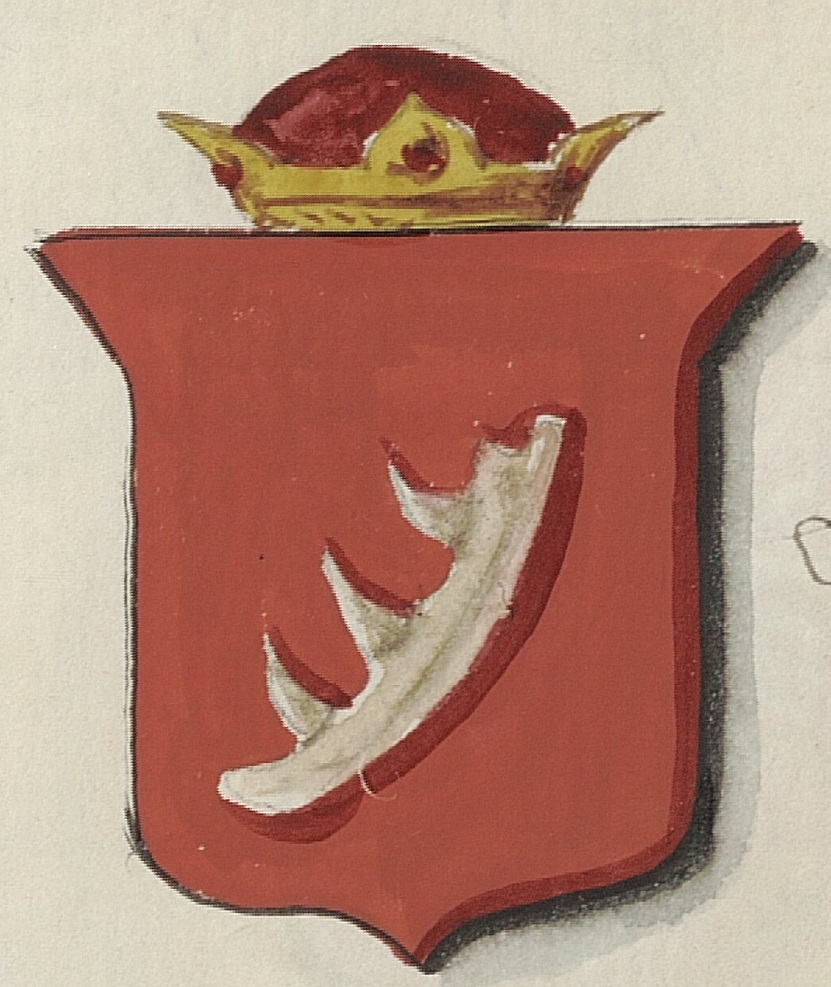|
Pereyaslav
Pereiaslav ( uk, Перея́слав, translit=Pereiaslav, yi, פּרעיאַסלעוו, Periyoslov) is a historical city in the Boryspil Raion, Kyiv Oblast (province) of central Ukraine, located near the confluence of Alta and Trubizh rivers some south of the nation's capital Kyiv. From 1943 until 2019 the city name was Pereiaslav-Khmelnytskyi (or ''Pereyaslav-Khmelnytskyy''; uk, Перея́слав-Хмельни́цький).Rada renamed Pereyaslav-Khmelnitsky (30 October 2019 [...More Info...] [...Related Items...] OR: [Wikipedia] [Google] [Baidu] |
Principality Of Pereiaslavl'
The Principality of Pereyaslavl ( uk, Переяславське князівство) was a regional principality of Kievan Rus' from the end of 9th century until 1323, based in the city of Pereyaslavl (now ''Pereiaslav'') on the Trubizh River. Siting The Principality of Pereyaslavl was usually administrated by younger sons of the Grand Prince of Kiev. It stretched over the extensive territory from the left banks of the middle Dnieper river on the west to its eastern frontier that laid not far west from the Seversky Donets, where the legendary Cuman city of Sharuk(h)an was presumably situated. History The '' Primary Chronicle'' dates the foundation of the city of Pereyaslavl' to 992; the archaeological evidence suggests it was founded not long after this date. In its early days Pereyaslavl' was one of the important cities in Kievan Rus' behind the Principality of Chernigov and Kiev. The city was located at a ford where Vladimir the Great fought a battle against the nomad ... [...More Info...] [...Related Items...] OR: [Wikipedia] [Google] [Baidu] |
Pereiaslav Urban Hromada
Pereiaslav ( uk, Перея́слав, translit=Pereiaslav, yi, פּרעיאַסלעוו, Periyoslov) is a historical city in the Boryspil Raion, Kyiv Oblast (province) of central Ukraine, located near the confluence of Alta and Trubizh rivers some south of the nation's capital Kyiv. From 1943 until 2019 the city name was Pereiaslav-Khmelnytskyi (or ''Pereyaslav-Khmelnytskyy''; uk, Перея́слав-Хмельни́цький).Rada renamed Pereyaslav-Khmelnitsky (30 October 2019 [...More Info...] [...Related Items...] OR: [Wikipedia] [Google] [Baidu] |
Kievan Rus'
Kievan Rusʹ, also known as Kyivan Rusʹ ( orv, , Rusĭ, or , , ; Old Norse: ''Garðaríki''), was a state in Eastern and Northern Europe from the late 9th to the mid-13th century.John Channon & Robert Hudson, ''Penguin Historical Atlas of Russia'' (Penguin, 1995), p.14–16.Kievan Rus Encyclopædia Britannica Online. Encompassing a variety of polities and peoples, including East Slavic, Norse, and Finnic, it was ruled by the Rurik dynasty, founded by the |
Pereslavl
Pereslavl-Zalessky ( rus, Переславль-Залесский, p=pʲɪrʲɪˈslavlʲ zɐˈlʲɛskʲɪj, lit. ''Pereslavl beyond the woods''), also known as Pereyaslavl-Zalessky, is a town in Yaroslavl Oblast, Russia, located on the main Moscow–Yaroslavl road and on the southeastern shore of Lake Pleshcheyevo at the mouth of the Trubezh River. Population: Geography Pereslavl-Zalessky is located in south of Yaroslavl Oblast, near a border with Moscow Oblast, northeast of Moscow, and southwest of Yaroslavl. Climate Climate of Pereslavl-Zalessky is humid continental: long, cold and snowy winters and short, warm and rainy summers. Average temperatures range from in January to in July. History Known as Pereyaslavl until the 15th century, it was founded in 1152 by George I of Vladimir as a projected capital of Zalesye. The inhabitants of the nearby town of Kleshchin were relocated to the new town. Between 1175 and 1302, Pereslavl was the seat of a principality (not ... [...More Info...] [...Related Items...] OR: [Wikipedia] [Google] [Baidu] |
Pereslavl-Zalessky
Pereslavl-Zalessky ( rus, Переславль-Залесский, p=pʲɪrʲɪˈslavlʲ zɐˈlʲɛskʲɪj, lit. ''Pereslavl beyond the woods''), also known as Pereyaslavl-Zalessky, is a town in Yaroslavl Oblast, Russia, located on the main Moscow–Yaroslavl road and on the southeastern shore of Lake Pleshcheyevo at the mouth of the Trubezh River. Population: Geography Pereslavl-Zalessky is located in south of Yaroslavl Oblast, near a border with Moscow Oblast, northeast of Moscow, and southwest of Yaroslavl. Climate Climate of Pereslavl-Zalessky is humid continental: long, cold and snowy winters and short, warm and rainy summers. Average temperatures range from in January to in July. History Known as Pereyaslavl until the 15th century, it was founded in 1152 by George I of Vladimir as a projected capital of Zalesye. The inhabitants of the nearby town of Kleshchin were relocated to the new town. Between 1175 and 1302, Pereslavl was the seat of a principality (not ... [...More Info...] [...Related Items...] OR: [Wikipedia] [Google] [Baidu] |
Mongol Invasion Of Kievan Rus'
The Mongol Empire invaded and conquered Kievan Rus' in the 13th century, destroying numerous southern cities, including the largest cities, Kiev (50,000 inhabitants) and Chernihiv (30,000 inhabitants), with the only major cities escaping destruction being Novgorod and Pskov, located in the north. The campaign was heralded by the Battle of the Kalka River in May 1223, which resulted in a Mongol victory over the forces of several Rus' principalities as well as the remnants of the Cumans under Köten. The Mongols retreated, having gathered their intelligence, which was the purpose of the reconnaissance-in-force. A full-scale invasion of Rus' by Batu Khan followed, from 1237 to 1242. The invasion was ended by the Mongol succession process upon the death of Ögedei Khan. All Rus' principalities were forced to submit to Mongol rule and became vassals of the Golden Horde, some of which lasted until 1480. The invasion, facilitated by the beginning of the breakup of Kievan Rus' i ... [...More Info...] [...Related Items...] OR: [Wikipedia] [Google] [Baidu] |
Pereyaslavl Ryazansky
Ryazan ( rus, Рязань, p=rʲɪˈzanʲ, a=ru-Ryazan.ogg) is the largest types of inhabited localities in Russia, city and administrative center of Ryazan Oblast, Russia. The city is located on the banks of the Oka River in Central Russia, southeast of Moscow. As of the 2010 Census, Ryazan had a population of 524,927, making it the List of cities and towns in Russia by population, 33rd most populated city in Russia, and the fourth most populated in Central Federal District, Central Russia after Moscow, Voronezh, and Yaroslavl. Ryazan was previously known as Pereyaslavl-Ryazansky () until 1778, where it became the new capital of the Principality of Ryazan following the Mongol invasion of Kievan Rus'. The original capital, located downstream on the Oka and now known as Old Ryazan (), was among the first cities in Russia to be Siege of Ryazan, beseiged and destroyed during the invasion that began in 1237. The city is known for the Ryazan Kremlin, a historic museum; the Pozhalo ... [...More Info...] [...Related Items...] OR: [Wikipedia] [Google] [Baidu] |
Kyiv
Kyiv, also spelled Kiev, is the capital and most populous city of Ukraine. It is in north-central Ukraine along the Dnieper River. As of 1 January 2021, its population was 2,962,180, making Kyiv the seventh-most populous city in Europe. Kyiv is an important industrial, scientific, educational, and cultural center in Eastern Europe. It is home to many high-tech industries, higher education institutions, and historical landmarks. The city has an extensive system of public transport and infrastructure, including the Kyiv Metro. The city's name is said to derive from the name of Kyi, one of its four legendary founders. During its history, Kyiv, one of the oldest cities in Eastern Europe, passed through several stages of prominence and obscurity. The city probably existed as a commercial center as early as the 5th century. A Slavic settlement on the great trade route between Scandinavia and Constantinople, Kyiv was a tributary of the Khazars, until its capture by the Varangian ... [...More Info...] [...Related Items...] OR: [Wikipedia] [Google] [Baidu] |
Vladimir I, Prince Of Kiev
Vladimir I Sviatoslavich or Volodymyr I Sviatoslavych ( orv, Володимѣръ Свѧтославичь, ''Volodiměrъ Svętoslavičь'';, ''Uladzimir'', russian: Владимир, ''Vladimir'', uk, Володимир, ''Volodymyr''. See Vladimir (name) for details., ''Vladimir Svyatoslavich''; uk, Володимир Святославич, ''Volodymyr Sviatoslavych''; Old Norse ''Valdamarr gamli''; c. 95815 July 1015), also known as Vladimir the Great or Volodymyr the Great, was Prince of Novgorod, Grand Prince of Kiev, and ruler of Kievan Rus' from 980 to 1015. Vladimir's father was Prince Sviatoslav I of Kiev of the Rurikid dynasty. After the death of his father in 972, Vladimir, who was then prince of Novgorod, was forced to flee to Scandinavia in 976 after his brother Yaropolk murdered his other brother Oleg of Drelinia, becoming the sole ruler of Rus'. In Sweden, with the help of his relative Ladejarl Håkon Sigurdsson, ruler of Norway, he assembled a Varangia ... [...More Info...] [...Related Items...] OR: [Wikipedia] [Google] [Baidu] |
Magdeburg City Rights
Magdeburg rights (german: Magdeburger Recht; also called Magdeburg Law) were a set of town privileges first developed by Otto I, Holy Roman Emperor (936–973) and based on the Flemish Law, which regulated the degree of internal autonomy within cities and villages granted by the local ruler. Named after the German city of Magdeburg, these town charters were perhaps the most important set of medieval laws in Central Europe. They became the basis for the German town laws developed during many centuries in the Holy Roman Empire. The Magdeburg rights were adopted and adapted by numerous monarchs, including the rulers of Bohemia, Hungary, Poland and Lithuania, a milestone in the urbanization of the region which prompted the development of thousands of villages and cities. Provisions Being a member of the Hanseatic League, Magdeburg was one of the most important trade cities, maintaining commerce with the Low Countries, the Baltic states, and the interior (for example Braunschwe ... [...More Info...] [...Related Items...] OR: [Wikipedia] [Google] [Baidu] |
Stephen Báthory
Stephen Báthory ( hu, Báthory István; pl, Stefan Batory; ; 27 September 1533 – 12 December 1586) was Voivode of Transylvania (1571–1576), Prince of Transylvania (1576–1586), King of Poland and Grand Duke of Lithuania (1576–1586). The son of Stephen VIII Báthory and a member of the Hungarian Báthory noble family, Báthory was a ruler of Transylvania in the 1570s, defeating another challenger for that title, Gáspár Bekes. In 1576 Báthory became the husband of Queen Anna Jagiellon and the third elected king of Poland. He worked closely with chancellor Jan Zamoyski. The first years of his reign were focused on establishing power, defeating a fellow claimant to the throne, Maximilian II, Holy Roman Emperor, and quelling rebellions, most notably, the Danzig rebellion. He reigned only a decade, but is considered one of the most successful kings in Polish history, particularly in the realm of military history. His signal achievement was his victorious campaign i ... [...More Info...] [...Related Items...] OR: [Wikipedia] [Google] [Baidu] |
Crown Of The Kingdom Of Poland
The Crown of the Kingdom of Poland ( pl, Korona Królestwa Polskiego; Latin: ''Corona Regni Poloniae''), known also as the Polish Crown, is the common name for the historic Late Middle Ages territorial possessions of the King of Poland, including the Kingdom of Poland proper. The Polish Crown was at the helm of the Polish–Lithuanian Commonwealth from 1569 to 1795. Major political events The Kingdom of Poland has been traditionally dated back to c. 966, when Mieszko I and his pagan Slavic realm joined Christian Europe ( Baptism of Poland), establishing the state of Poland, a process started by his Polan Piast dynasty ancestors. His oldest son and successor, Prince Bolesław I Chrobry, Duke of Poland, became the first crowned King of Poland in 1025. Union of Krewo The Union of Krewo was a set of prenuptial agreements made in the Kreva Castle on August 13, 1385. Once Jogaila confirmed the prenuptial agreements on August 14, 1385, Poland and Lithuania formed a perso ... [...More Info...] [...Related Items...] OR: [Wikipedia] [Google] [Baidu] |

.jpg)

_-_panoramio.jpg)

.jpg)


